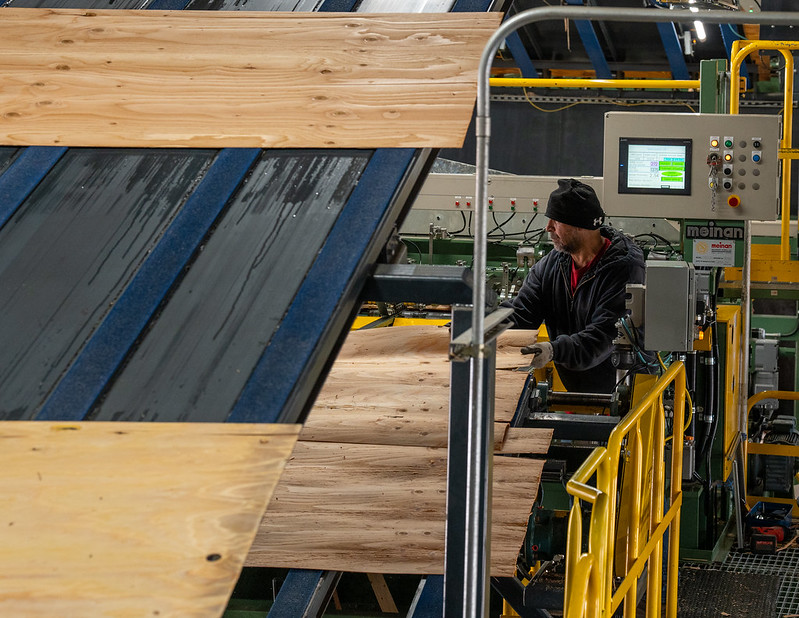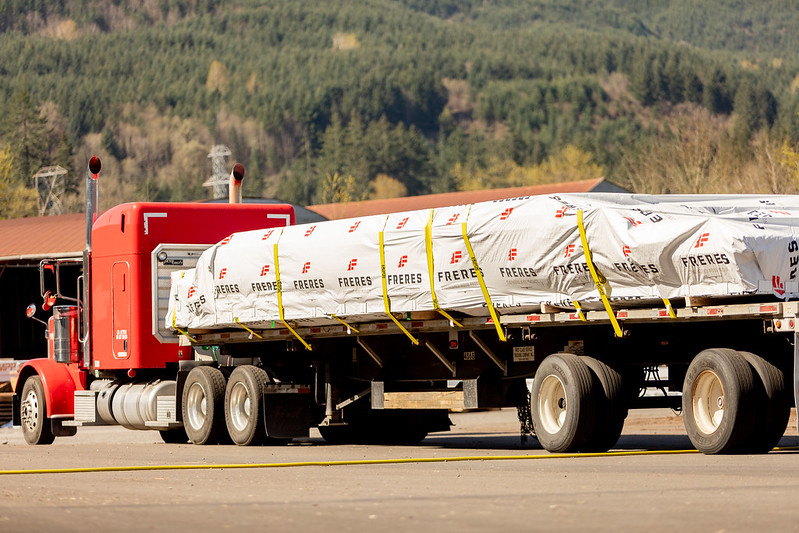Last week was a mess from a trade perspective. Lumber market volatility has been driven by uncertainty surrounding tariffs, shifting regulations, and unpredictable policy changes. All markets hate chaos and inconsistency. Regardless of the regulations coming down the pipeline, businesses want to know how the regulations are being applied, who will be impacted, and what the cost will be. We received none of that last week.
Tariffs went into effect on Tuesday, delaying a few shipments while details were worked out, and then evaporated a day and a half later. Worse, they were delayed again. Then the weekend came with big statements that tariffs are a wonderful thing, reciprocal tariffs are being analyzed, and 25% tariffs will just be the starting point. At this point, I will believe it when I see it. Fish or cut bait.
Lumber Imports from Canada
Everyone focuses on lumber imports from Canada due, I think, to the long-standing disagreement between the U.S. and Canada, the large volumes of lumber traded across the border, and long-standing anti-dumping countervailing duties on lumber products. It is no small issue considering the volume of lumber products traded between the two parties, but there is a history and future to the lumber issue outside of the tariffs that Trump is currently talking about levying.
There is currently a 14.54% anti-dumping countervailing duty on all Canadian lumber products. Earlier this month, the U.S. Department of Commerce announced that the anti-dumping rates were going to increase to 20.07% leading to a combined rate of 26.81%. This is prior to Trump’s proposed tariffs, leading to a potential combined rate of more than 50%. Lumber futures markets have risen 16.5% since the beginning of the year and last week they hit a 30-month high. Granted, the cash market was still trying to figure out who was going to eat the 25% tariff, so little commerce actually occurred at the futures contract levels.

Engineered Wood Imports from Canada
OSB, plywood, LVL, and veneer are different animals entirely. While veneer price has slowly been gaining ground since the 4th quarter of 2024 anyway, outside of tariff talk, panel sales hardly fluttered last week. Imagine that—a 25% increase on all other wood products from Canada and there was hardly a flinch. It all comes down to math.
The Canadian dollar hit its strongest in recent memory around July of 2021 when $1 U.S. was $1.21 Canadian. The exchange is now $1.44 Canadian per U.S. dollar. The Canadian dollar has weakened 19% to the U.S. dollar over the last 4 years. A 25% tariff will barely make up the exchange difference for all other forest products coming from Canada. During that time, the housing market declined significantly due to Fed rate hikes, but the Canadian producers of all “non-lumber” forest products have never taken their foot off the gas.

Impact on Pacific Northwest Veneer Markets
Pacific Northwest veneer markets are a perfect example. The Canadian producers continue to run 24 hours/7 days a week, while U.S. producers shed shifts and lay people off. There have been some opinions that veneer prices are going to rise significantly as soon as tariffs are imposed. I seriously doubt it. The only way that will happen is if Canadian producers shed shifts for a change. They haven’t reduced production for 30 years, so I don’t think they will do it now.
Additional lumber tariffs would be significant and set the stage for lumber mill closures north of the border when they take effect. All other wood products, however, have never felt the sting of tariffs and will have little overall impact on the market unless they moderate production. It might give American veneer producers a little breathing room for a change. There is no comparative advantage for Canadian veneer, LVL, and panel production over that of the U.S.
Subscribe
We’ll send you a notification when a new story has been posted. It’s the easiest way to stay in the know.